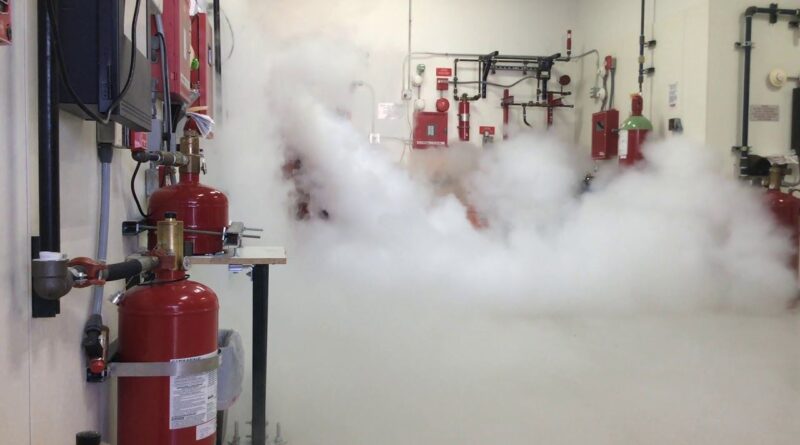Why You Should Invest in Clean Agent Suppression
When you’re dealing with sensitive data, high-value equipment, or mission-critical operations, a standard fire sprinkler system just won’t cut it. Water and electronics? Not exactly the best mix. That’s why more businesses and facility managers are turning to clean agent suppression systems. They’re fast, effective, and don’t leave behind a mess.
It’s not just about putting out fires—it’s about doing it without ruining what you’re trying to save in the first place. That’s where these high-tech systems shine.
In fact, if you’re looking to protect critical environments like server rooms, control centres, or labs, a modern clean agent suppression system is a must-have. Let’s dive into why this investment is totally worth it.
What Is Clean Agent Suppression?
Clean agent suppression systems use gaseous fire extinguishing agents that are safe for people and equipment. These agents suppress fires without using water, foam, or powder—so there’s no damage to electronics, paper files, or delicate machinery.
These systems are ideal for places that can’t afford downtime or destruction caused by traditional fire suppression methods. Think data centres, hospitals, museums, and more.
Why Water Isn’t Always the Answer
We’re all familiar with sprinkler systems—they’re great in warehouses or residential settings. But when you’re protecting IT infrastructure, scientific equipment, or irreplaceable archives, water can do more harm than the fire itself.
Imagine a small server fire being extinguished… only for your entire network to be soaked. That’s why so many organisations are shifting toward clean agent solutions.
Where You’ll Find Clean Agent Systems in Use
These systems are the go-to fire protection solution for any environment that relies on operational continuity and asset preservation.
Common spaces include:
-
Data centres and server rooms
-
Telecommunication facilities
-
Medical labs and imaging rooms
-
Museums, archives, and libraries
-
Control and command centres
-
Aircraft hangars and simulators
Basically, if you can’t afford damage or downtime, clean agent suppression is your best friend.
How Do Clean Agents Actually Work?
Clean agent systems act fast. Once a fire is detected, the system floods the protected area with a gas that either removes heat, reduces oxygen, or interrupts the fire’s chemical reaction. The fire is out in seconds—often before there’s even visible flame.
And the best part? No water, no residue, no clean-up.
Types of Clean Agents You Can Use
Not all clean agents are the same. Each one has its own strengths depending on your space, safety requirements, and environmental concerns.
1. FM-200 (HFC-227ea):
-
Fast acting and widely used
-
Electrically non-conductive
-
Leaves no residue
2. Novec 1230:
-
Eco-friendly with low global warming potential
-
Ideal for spaces with people
-
Clean and safe
3. Inert Gases (like Argonite or Inergen):
-
Made from natural gases like nitrogen and argon
-
Work by reducing oxygen to stop the fire
-
Safe for humans and equipment when used properly
Benefits of Investing in Clean Agent Suppression
Let’s talk about the real-world perks of using these systems. It’s more than just fire safety—it’s business continuity, asset protection, and peace of mind.
1. No Water Damage
The most obvious one—there’s no water involved. You don’t have to worry about electronics getting fried or files turning to mush.
2. Rapid Response
Clean agent systems suppress fires in under 10 seconds. That means minimal damage and less downtime.
3. Safe for People
Most clean agents are non-toxic and safe for use in occupied spaces. They evacuate quickly and don’t leave a trace.
4. No Mess to Clean Up
Since these agents are gaseous, there’s nothing left to clean up. No soggy carpets, no foam residue, no powder covering your equipment.
5. Space Saving
The systems are compact, and the agent cylinders can be stored in tight or remote locations.
6. Environmentally Responsible
Modern agents like Novec 1230 are environmentally friendly, with low or zero ozone depletion potential and low GWP.
How Much Does It Cost to Install a Clean Agent System?
Here’s the thing—it’s not the cheapest option upfront. But consider this: how much would it cost your business to replace a room full of servers or repair a flooded data centre?
Costs vary depending on the size of your facility, the type of agent used, and the complexity of the installation. But when you weigh that against the potential losses, clean agent suppression is a smart long-term investment.
Installation: What to Expect
Installing one of these systems is a professional job. It involves careful planning, technical design, and precise execution.
Key steps include:
-
Site assessment and risk analysis
-
System design tailored to your layout and needs
-
Integration with fire alarms and control panels
-
Testing and commissioning
-
Routine inspections and servicing
It’s not plug-and-play, but once it’s up and running, you’ve got 24/7 protection.
Maintenance Matters
Just like any other safety system, clean agent suppression systems need regular maintenance. Annual inspections, system checks, and re-certification are essential to keep everything in working order.
Don’t skip the maintenance—it’s the difference between a system that works when you need it and one that doesn’t.
Is It Right for Your Business?
If your business depends on data, high-value equipment, or continuous operations, the answer is a clear yes. Clean agent suppression offers a level of protection that traditional systems just can’t match.
Whether you’re running a high-tech data centre or preserving historical archives, protecting your assets from both fire and water is critical.
Final Thoughts
In today’s world, business continuity is everything. Downtime costs money. Equipment replacement costs even more. And reputation damage? That’s priceless.
Investing in a clean agent suppression system means thinking ahead. It means understanding that prevention is far better—and cheaper—than dealing with disaster.

